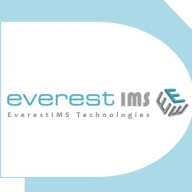

Microsoft System Center and Infraon IMS compete in the IT management and monitoring category. Each offers unique features catering to different business needs, making Infraon IMS appear more flexible due to its customization ease and adaptable pricing.
Features: Microsoft System Center is appreciated for its integration with Microsoft products, automation, and management of third-party hypervisors like VMware and Citrix. It also stands out for its ease of configuration and comprehensive reporting. Infraon IMS is recognized for real-time network monitoring, customizable dashboards, and role-based access, providing detailed insights into network performance and health without needing technical expertise.
Room for Improvement: Microsoft System Center faces challenges with non-Microsoft integration, resource usage, and requires better mobile support. Users find installation complex. Infraon IMS could enhance its reporting capabilities, improve its GUI for ease of use, and increase integration with other tools, especially for non-IPBS devices.
Ease of Deployment and Customer Service: Both systems are primarily on-premises with some hybrid capabilities. Microsoft System Center's deployment can be complex, and support is often viewed as costly. Infraon IMS is praised for easier deployment; however, users note support engagement could be more effective.
Pricing and ROI: Microsoft System Center carries higher pricing with yearly licensing fees, but offers ROI through time savings. Infraon IMS, with its flexible pricing based on features, is seen as more reasonable and aligned to specific needs, providing better ROI for many organizations.
| Product | Market Share (%) |
|---|---|
| Microsoft System Center | 0.4% |
| Infraon IMS | 0.4% |
| Other | 99.2% |


| Company Size | Count |
|---|---|
| Small Business | 3 |
| Midsize Enterprise | 2 |
| Large Enterprise | 3 |
| Company Size | Count |
|---|---|
| Small Business | 7 |
| Midsize Enterprise | 4 |
| Large Enterprise | 10 |
Infraon IMS offers network monitoring with real-time dashboards, customizable GUIs, and integrated tools, supporting device management and workflow automation efficiently.
Infraon IMS delivers stable performance with features tailored for easy customization and detailed network management. Users benefit from real-time monitoring through role-based dashboards and integrated ticketing tools. However, improvements in reporting, GUI usability, and AI integration are needed. Challenges include monitoring non-IPBS devices and improving connectivity visibility. Users require seamless Infraon Desk integration, ease of device addition, and enhanced topology views.
What are the key features of Infraon IMS?In industries like IT infrastructure and data center management, Infraon IMS is utilized for network monitoring and managing key components such as leased lines and firewalls. Its capabilities aid diverse geographical locations in overseeing data centers, offering centralized monitoring and access to critical infrastructure.
We monitor all Cloud Monitoring Software reviews to prevent fraudulent reviews and keep review quality high. We do not post reviews by company employees or direct competitors. We validate each review for authenticity via cross-reference with LinkedIn, and personal follow-up with the reviewer when necessary.